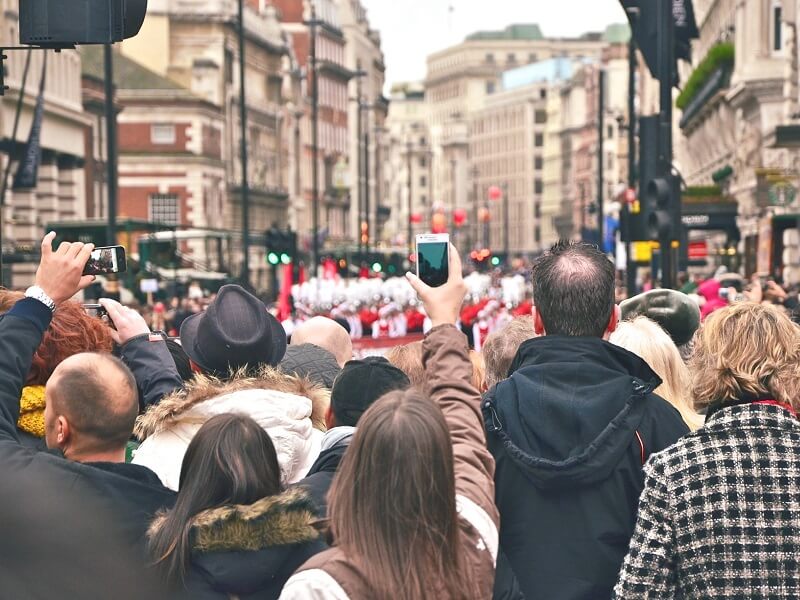Taking your own photos and videos, how to get those assets to the press and when to hire a pro
First, a caveat, if you can bring a professional photographer, do it! If you are good at taking photos and videos, skip to the parts about how to submit them or what makes for a good photo opp.
They say a picture is worth a thousand words. Could we be focusing on the wrong thing with all this text? Would you rather have a big picture on the cover/homepage of the New York Times or an article inside? We want both, of course, but the photo is what gets more attention from our audience!
If you are as uncomfortable as Amy, a self-admitted terrible photographer, with taking photos and videos, don’t be. We have had photos and even iPhone videos, taken by this terrible photographer, run on TV.
Of course, you still would rather have the media come (you are more likely to get the story to run), but what if they don’t? You have to fill the role of the reporter even more. Let’s call it HARO, Help a Reporter Out…maybe that’s already taken.
Operating Like a Newsroom
If the news won’t come, serve as an extension of their newsroom by:
Taking & Submitting Your Own Photos & Videos
Photo Tips
Taking photos on your smartphone is easy. Taking really good photos is not. Follow a few basic tips and you will be getting pictures that are good enough to share with the media. Here is a list of what to look out for:
- Be aware of your lighting. If you are outside, know where the sun is and how that will affect your shots. If you are inside, try to have natural light come in by being by big windows or you may need to supplement.
- Shoot horizontally (turn your phone sideways).
- Zoom the old fashion way. Meaning do not pitch and squeeze to zoom in on your screen. Walk closer to your subject to zoom in. If that is not possible, you should make sure you are taking high-resolution photos (see next tip) and crop after.
- Use the “HDR” setting for high-resolution photos.
- Use the “exposure lock” feature. Amy mentions in the podcast that she doesn’t know what this is and doesn’t use it. Simply hold your finger on your screen for what you want to stay focused on so the camera doesn’t zoom in/out on its own and lose focus on what you are capturing.
- Turn the “Live” feature (for iPhones) off.
- Most important rule: there are no rules, as Amy says,
“Take the damn photo!”
Other general (non-technical tips):
- Action shots are typically better than smiling faces.
- If you can get a company logo (perhaps on a t-shirt or a banner in the background), that’s great.
- No Selfies!
Video Tips
Tips for taking videos with a smartphone are basically the same as photos, with a few added suggestions:
- Use a tripod (or improvise something to keep your phone steady) if you can.
- If you are capturing audio, use a microphone, lavalier mics are great for interviews and speeches.
See Tips for Creating iPhone Videos for more details or watch this how-to video:
When & How to Submit Photos/Videos
Here are guidelines about when and how to submit your assets:
When to Submit
TV
Submit photos and videos right away to TV, as soon as you can. News gets old really fast and TV typically has a 4 – 5 p.m. air-time, meaning you want to submit by 2 p.m. at the latest. So, if you can, hold your event/photo opp early in the day to give you time to submit to TV.
- If it’s a weekday and your news didn’t run the day the news occurred you have a lower chance of it running the next day.
- But if the news occurs on a Friday and they didn’t run it you have a higher chance of them running it over the weekend.
- Follow up/resend & call over the weekend.
- No means no!
Print/Online
It is still best to send the day of, but not as imperative. You can be a little less aggressive and send later that day or the next.
How to Submit
- Upload videos & photos into Dropbox or a shared Google Drive and send links that are clearly labeled and accessable by the media, meaning make sure they can view and download.
- Don’t overload them with too many junky photos.
- Attach photos if you only have a few that are small. Emails with large attachments are often blocked and more likely to go into spam folder.
Photo Resolution
Pixels are more important than file size, however:
- A photo that is 500KB (.5MB) is usually big enough (unless for magazines or billboards).
- 3000 pixels wide is probably good enough for any outlet.
- By default, most iPhones will take an image at 72 DPI.
Photo Opp Ideas
When Amy talks about using events a lot for getting photos and videos for press coverage, it does not have to be what you’d traditionally call an event. Any time something is happening that is worthy of a photo or video opp, that’s an event.
If you don’t have a cartload of crazy clowns moving into town to promote your thing, you may have to get a little more creative. Here are some ideas that provide good photo opps:
- Groundbreaking for new construction
- Ribbon cutting for new office/location +
- Oversized check presentation +
- Public art unveiling
- Art installation
- Exhibitors moving into a tradeshow
- Special performance for children (remember you need a photo release if you are taking photos/videos of kids)
- The measuring of a race course
- Large scale event set up/move-in
- New building/structure tours
- Moving days for notable organizations
- Volunteering or doing something active in the community
- The event itself (along with or instead of a pre-event photo opp)—don’t forget the event you’ve been hired to promote is a photo opp in and of itself
- Large-scale donation of food, clothing or other physical item drop off
- Any other thing that you can make visual or active
+ Add more to it: incorporate other important things. Talking heads—such as politicians, VIP, donors—talking about important things are always good but visually thin. What can your photo opp players literally DO during their 20 minutes of fame?
When to Bring in the Professionals
While we have explained how easy it is for anyone to take photos and videos for the media, there are certain times you really should call a professional photographer/videographer.
- Products – always use a pro for product shots.
- Big Events/Fundraisers – many large events and fundraisers will already have a hired a pro, be their friend, get their photos, give credit.
- Reoccurring Events/Activities – do you do the same type of volunteering every year? Hire a photographer at least one year to get really good photos you can reuse.
Photo Captions: A Press Release in a Sentence or Two
Photo captions are like mini press releases that can get you additional exposure and recognition. Follow these tips when sending to the press:
- List who’s in the photo from left-to-right.
- Include job titles only if they are very important or you don’t have much else to say about the organization.
- Add a sentence that incorporates the results of what was happening in the photo if possible. X pounds of garbage collected; X dollars raised; or new office opened in X community.
With these tips and a little practice, you will be operating like your own newsroom in no time!
This episode of PR Talk is brought to you by PRSA Oregon
Throughout Oregon and Southwest Washington, PRSA provides members with networking, mentorship, skill building and professional development opportunities – whether you are a new professional fresh out of college or a skilled expert with 20 years in the industry. Check out PRSAoregon.org for more information on how membership can help you grow and connect.
PR Talk is sponsored by monday
In such a fast-paced, multi-faceted work environment, it can be tough to stay on top of everything. monday is the collaboration tool trusted by businesses of all kinds to help cut down the clutter and streamline productivity. Learn more at monday.com and signup for a free trial. You’ll see in no time why so many teams around the world are choosing monday for their project management needs.
PR Talk listeners can use the coupon code BetterExecute for a 15% discount.











